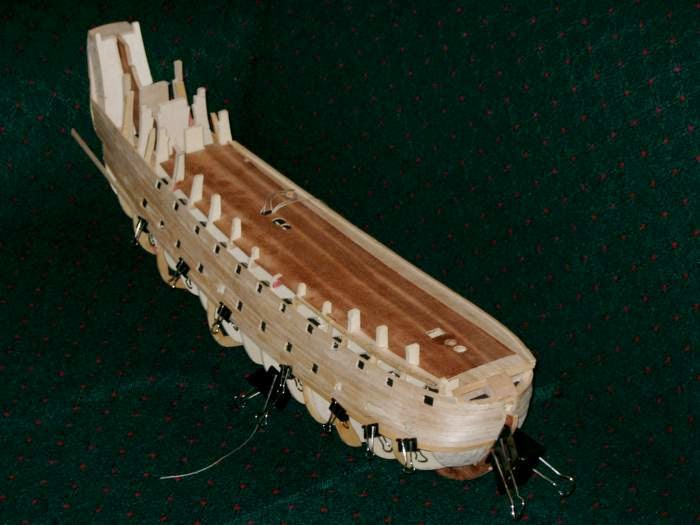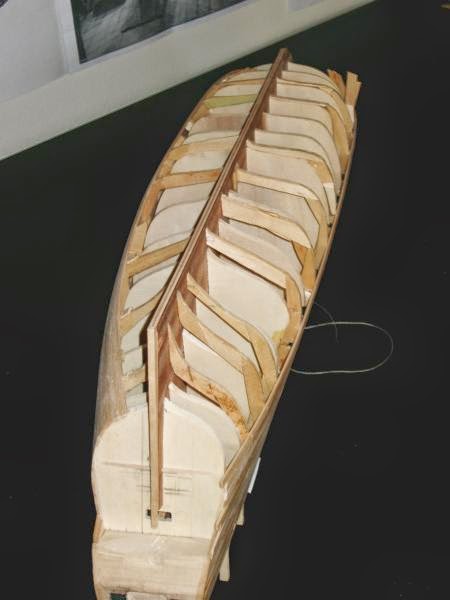Well, shortly after the last update, the plans arrived.
After scaling up the plans, I started checking the hull shape.
This is the worst bit, the stern, below the waterline.
Pretty bad, huh?
I built new frames using the plans.
I used a cutout of the side view as a template for getting the deck profile right.
The main deck had to be lowered between 5 mm and 1 cm to get it right.
I then attached the deck.
Since the deck is curved in two directions and isn't easily pre-shaped,
I used epoxy and nails to make sure it stays firmly attached.
Upper gundeck ports have been marked and the half gun attachments installed behind them.
Some of the bulkheads had to be cut through since the kit had all the gunports in the wrong places.
The deck needed extension forward and the main mast needed moving forward as well.
I've adjusted the width of the deck and installed waterboards, which ended up outside the kit bulkheads!
(A scale playdough man is standing in front of the beakhead bulkhead)
The bulkhead extensions above deck seemed to be more of a nuisance than a help, so when I installed the port side
waterways I cut them off first.
A newly steamed plank is held in place while drying.
Wet planks make these clamps stain the wood, caution!
It doesn't matter here though. This is only the first layer of planking.
These pictures are pretty telling in how inaccurate the kit hull shape is.


































